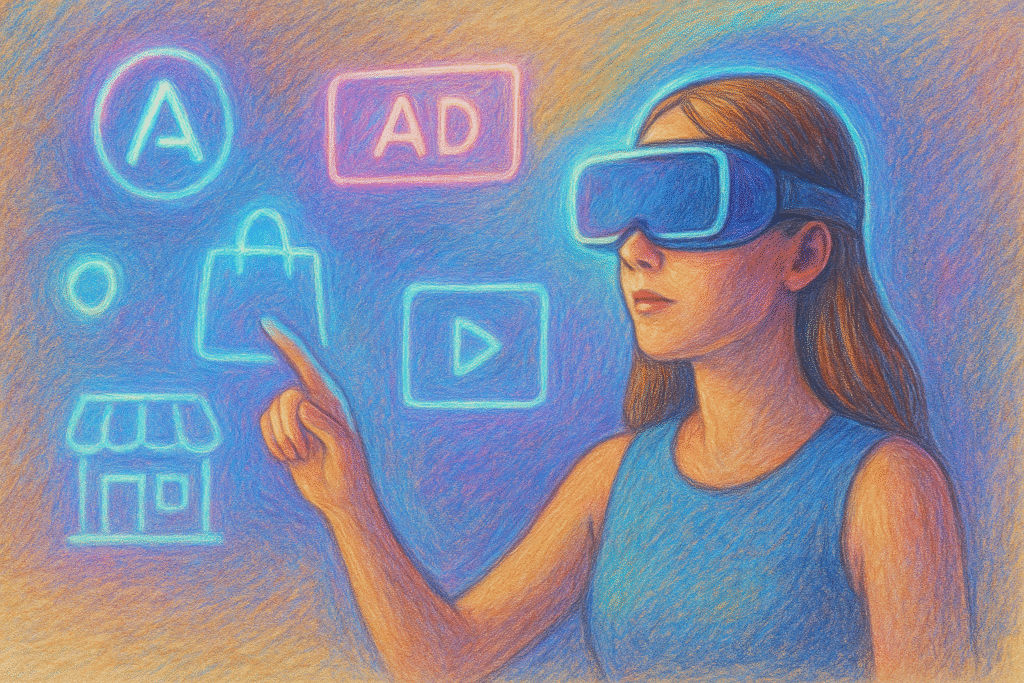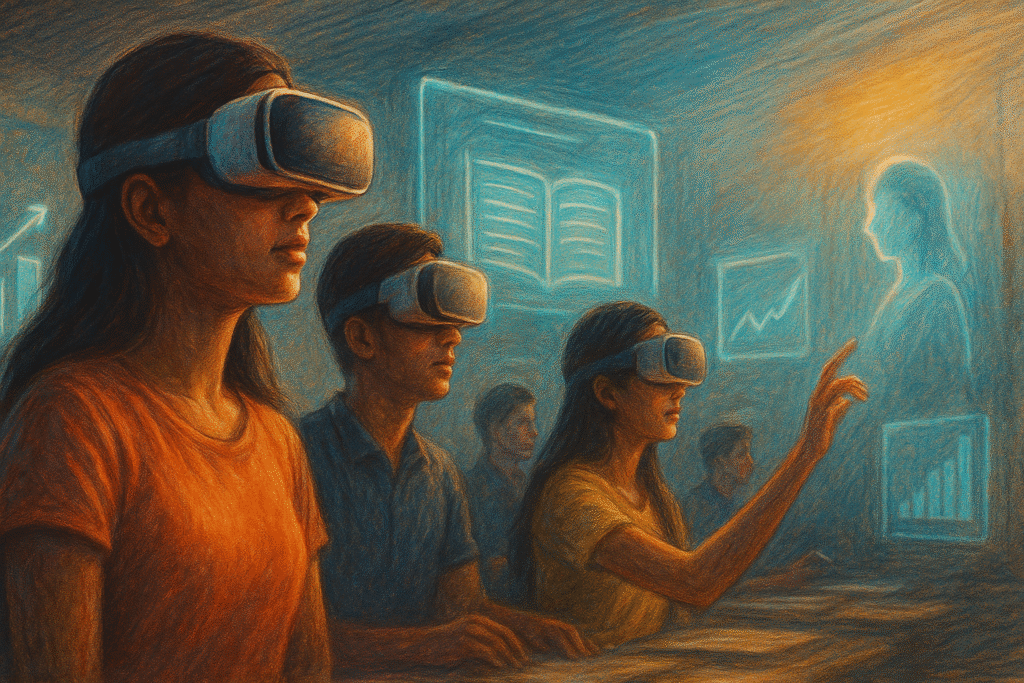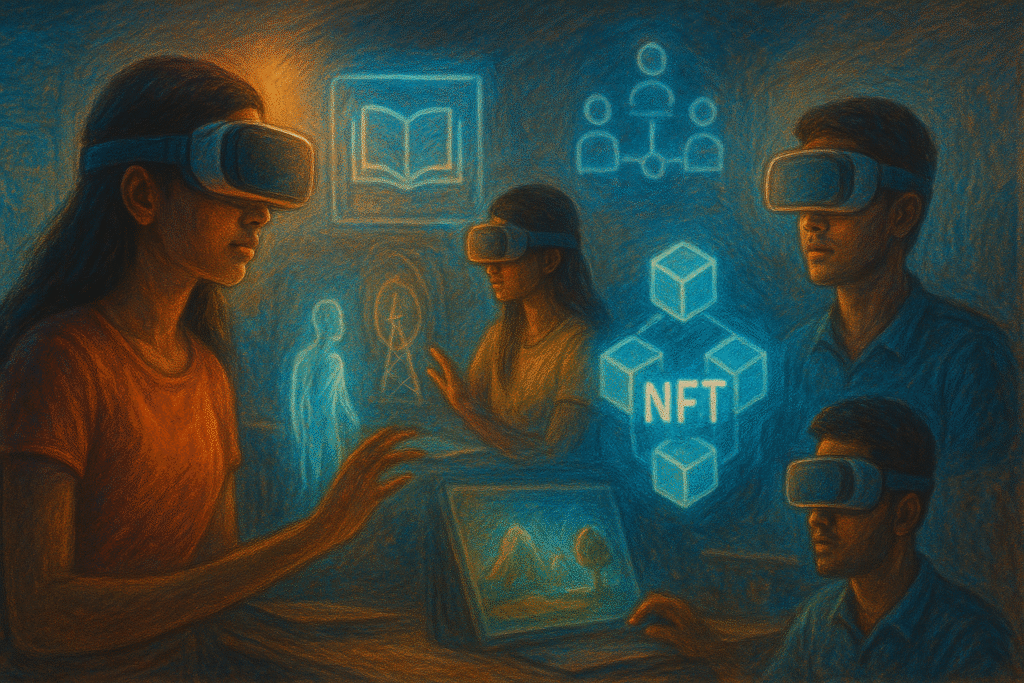Imagine this. You’re sitting in your hostel room, wearing VR glasses. Instead of just scrolling Instagram, you’re inside a virtual mall. You walk around, try on a pair of sneakers (without touching them), click “buy,” and boom, the shoes are delivered to your doorstep in real life.
Sounds like a video game, right? Well, that’s the metaverse. And in digital marketing, it’s being called the next big thing.
If you’re a digital marketing student, you can’t afford to ignore this. Just like social media changed marketing in the 2010s, the metaverse is about to flip the rules again in the 2020s.
So, let’s break down what this metaverse buzz is all about, and how it’s shaping marketing in ways you probably haven’t imagined.
First, What on Earth is the Metaverse?
In simple words, the metaverse is a virtual universe, a 3D digital space where people can hang out, work, shop, and play through avatars.
Think:
Social media + video games + virtual reality = Metaverse.
Examples already around us:
Roblox – where brands like Nike sell virtual sneakers.
Decentraland – where people buy virtual land (yes, seriously).
Meta’s Horizon Worlds – Facebook’s own version of the metaverse.
It’s not just a game. It’s the internet evolving from 2D (scrolling) to 3D (living inside it).

Why Marketers Are Excited About It
Because wherever people go, marketers follow.
2005: Everyone was on Orkut = brands followed.
2010: Facebook and Instagram boom = brands followed.
2025: Metaverse = guess what? Brands will be there too.
If people are spending hours in virtual worlds, marketers see opportunities for ads, experiences, and engagement.
How Marketing Will Work in the Metaverse
Here’s how brands are already experimenting:
1. Virtual Stores
Imagine walking into a Nike showroom in the metaverse, trying sneakers on your avatar, and buying them for delivery in real life.
It’s like online shopping-but interactive and fun.
2. Virtual Events & Concerts
Travis Scott held a virtual concert on Fortnite. 12 million people attended (way more than any stadium could hold).
Brands can sponsor such events, just like they do in real life.
3. Branded Virtual Goods (NFTs)
People are buying virtual clothes, sneakers, and accessories for their avatars. These are called NFTs (Non-Fungible Tokens).
Example: Gucci sold a virtual handbag in Roblox for more money than the real one.
4. Immersive Ads
Forget boring banner ads. Imagine walking through a virtual city and seeing billboards, shops, or experiences powered by brands.
Example: Coca-Cola launched limited-edition NFTs for fans in the metaverse.
5. Learning & Training Spaces
Even universities and companies are setting up virtual classrooms and offices.
For students, this means internships, workshops, and campaigns might soon happen in the metaverse itself.

Why Students Must Pay Attention
Early Advantage: Just like the first social media marketers became industry leaders, early metaverse marketers will dominate tomorrow.
New Careers: Brands will need specialists in VR content, NFT campaigns, 3D ads, and metaverse events.
Creativity Wins: This is not copy-paste marketing. The metaverse rewards those who can build fun, immersive, interactive experiences.
Mini Case Study: Zara’s Virtual Fashion
Zara launched a virtual collection where students could dress their avatars in branded outfits.
Result? Thousands of young shoppers bought both virtual and real clothes.
Lesson: In the metaverse, marketing = experience, not just ads.
The Challenges (Because It’s Not All Glamorous)
Before you pack your bags for the metaverse, let’s be real:
Expensive Tech: VR headsets aren’t cheap.
Limited Access: Not everyone is inside the metaverse yet.
Privacy Issues: Data collection in virtual worlds can get scary.
Hype vs Reality: Many projects fail to live up to the buzz.
But remember: Even the internet in the 90s felt “too complicated.” Look at us now.
Skills Students Should Learn for Metaverse Marketing
Basic VR/AR Tools – Learn tools like Unity, Blender, Spark AR.
Storytelling in 3D – Ads will be experiences, not just words.
Community Building – Engage audiences in virtual spaces.
NFT & Blockchain Basics – Because digital ownership is big here.
Creative Experimentation – Think like a gamer, not just a marketer.

Quick Recap
Metaverse marketing = creating immersive brand experiences in virtual worlds.
It includes:
Virtual stores
Digital events
NFTs and virtual goods
Interactive ads
Training/learning spaces
For students, this means new careers, new skills, and early opportunities.
Final Thoughts
The metaverse might sound futuristic today, but so did Instagram when it first launched. Today, Instagram marketing is a full-fledged career.
Similarly, in a few years, Metaverse Marketing Manager could be a real job title.
So, as a student, don’t just scroll past this buzzword. Learn it, explore it, maybe even try it. Because tomorrow’s best marketers won’t just run Facebook Ads – they’ll design experiences inside virtual worlds.
Remember: The future of digital marketing won’t just be on screens. It will be around you, inside you, and sometimes, even as you.

